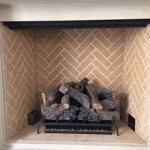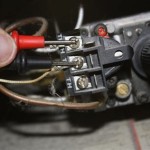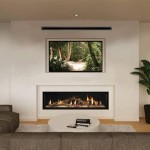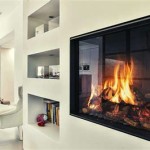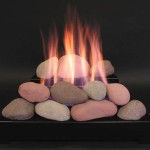Changing a Gas Fireplace to a Wood-Burning Fireplace: A Comprehensive Guide
Many homeowners find themselves contemplating a change in their fireplace type, specifically considering the transition from a gas-fueled system to a traditional wood-burning one. This decision is often driven by a desire for the ambiance and sensory experience associated with burning real wood, or perhaps concerns about the long-term costs and environmental impact of gas. However, converting a gas fireplace to a wood-burning fireplace is a complex project involving structural modifications, safety considerations, and adherence to local building codes. This article presents a detailed overview of the necessary steps, potential challenges, and factors to consider before embarking on such a conversion.
Before any work begins, a thorough assessment of the existing gas fireplace and surrounding structure is critical. This assessment should involve a qualified professional, such as a certified chimney sweep or a licensed contractor specializing in fireplace installations. The purpose of this inspection is threefold: to determine the feasibility of the conversion, to identify any existing structural issues that need to be addressed, and to outline the necessary modifications to meet safety and building code requirements.
Firstly, the existing gas fireplace unit needs to be carefully removed. This process involves disconnecting the gas line, a task that should only be performed by a licensed gas fitter. Any remaining gas lines must be capped and properly sealed to prevent leaks. The surrounding firebox and mantel should be inspected for any damage or deterioration. The condition of the existing chimney is also crucial, as it will need to be capable of safely venting the smoke and combustion byproducts from a wood-burning fire.
Secondly, local building codes and regulations should be meticulously researched. Fireplace installations are typically subject to strict rules regarding fire safety, ventilation, and emissions. Adhering to these codes is essential to ensure the safety of the occupants and to avoid potential legal issues. Building permits may be required before any construction work can begin. Consulting with the local building department is recommended to obtain the necessary information and approvals.
Thirdly, cost is a substantial factor. Converting a gas fireplace to wood-burning is a significant investment, and the overall cost can vary depending on the complexity of the project, the extent of the required modifications, and the materials used. It is important to obtain multiple quotes from qualified contractors and to factor in the cost of permits, inspections, and potential unforeseen expenses.
Key Point 1: Structural Requirements and Chimney Assessment
One of the most critical aspects of converting a gas fireplace to a wood-burning system is ensuring that the existing chimney is suitable for wood combustion. Gas fireplaces typically vent through smaller flues than wood-burning fireplaces require. Wood fires produce significantly more smoke, creosote, and heat, necessitating a larger flue to ensure proper drafting and prevent dangerous buildup of combustible materials. The existing chimney flue may need to be relined with a larger diameter liner to meet the required specifications for wood burning.
A chimney inspection should evaluate the chimney's overall condition, including the presence of cracks, deterioration, or obstructions. A damaged chimney can pose a serious fire hazard and may require extensive repairs or even complete replacement. The chimney's height and location are also important factors in determining its ability to properly draft. The chimney should extend at least three feet above the highest point of the roof and two feet higher than any structure within ten feet.
The firebox itself may also require modification to accommodate the higher temperatures generated by a wood fire. Gas fireplaces are often designed with refractory panels that are not intended to withstand the intense heat of burning wood. These panels may need to be replaced with firebricks or other heat-resistant materials. The firebox dimensions should also be adequate to safely contain the fire and prevent sparks from escaping.
Furthermore, consider the structural integrity of the surrounding wall. The added weight of a wood-burning insert or fireplace, as well as the increased heat radiating from the unit, may necessitate reinforcement of the wall structure. A structural engineer may need to be consulted to assess the load-bearing capacity of the wall and to recommend any necessary modifications.
Key Point 2: Safety Considerations and Ventilation
Safety is paramount when dealing with wood-burning fireplaces. Unlike gas fireplaces, which are typically sealed units, wood-burning fireplaces require careful attention to ventilation and fire safety. Carbon monoxide (CO) poisoning is a serious risk associated with wood-burning fireplaces, so the installation of CO detectors is essential. These detectors should be placed on every level of the home, particularly near sleeping areas.
Proper ventilation is critical to ensure that smoke and combustion byproducts are effectively exhausted from the house. Inadequate ventilation can lead to smoke backdrafting into the living space, creating a hazardous environment. The chimney damper should be fully functional and properly sized to control the draft. Regular chimney cleaning is also essential to remove creosote buildup and prevent chimney fires.
A spark arrestor should be installed at the top of the chimney to prevent embers from escaping and potentially igniting surrounding vegetation or structures. The area around the fireplace should be kept clear of flammable materials, such as curtains, rugs, and furniture. A fire extinguisher should be readily accessible in case of emergencies.
Consider the air supply to the fireplace. Wood-burning fireplaces require a sufficient supply of oxygen to burn efficiently and completely. If the house is tightly sealed, an outside air kit may be necessary to provide a dedicated source of fresh air to the fireplace. This will prevent the fireplace from drawing air from other areas of the house, which can create negative pressure and lead to backdrafting.
Key Point 3: Choosing a Wood-Burning Fireplace Insert or Open Fireplace
When converting from a gas fireplace, homeowners typically have two main options: installing a wood-burning fireplace insert or creating an open fireplace. A fireplace insert is a self-contained unit that is inserted into the existing firebox. Inserts are generally more efficient than open fireplaces, as they are designed to maximize heat output and minimize air leakage. They also offer greater control over the burning process, allowing for more consistent and predictable heat.
Open fireplaces, on the other hand, offer a more traditional aesthetic and a greater sense of connection to the fire. However, they are significantly less efficient than inserts, with much of the heat escaping up the chimney. Open fireplaces also require more attention and maintenance, as they are more prone to smoke backdrafting and creosote buildup.
Selecting the appropriate wood-burning appliance requires careful consideration of factors such as heating needs, aesthetic preferences, and budget. Fireplace inserts are available in a wide range of sizes, styles, and efficiencies. The size of the insert should be matched to the size of the room to be heated. Efficiency ratings, typically expressed as a percentage, indicate how much of the fuel's energy is converted into usable heat. Higher efficiency ratings generally translate to lower fuel consumption and reduced emissions.
For an open fireplace, the construction materials and design are crucial. Firebricks are the standard material for lining the firebox, providing excellent heat resistance and durability. The dimensions of the firebox and the chimney flue should be carefully calculated to ensure proper drafting. A well-designed open fireplace will provide a satisfying and safe fire experience.
In conclusion, the conversion of a gas fireplace to a wood-burning one is a complex undertaking requiring careful planning, professional expertise, and adherence to local building codes. The structural integrity of the chimney and firebox must be thoroughly assessed, and safety measures must be implemented to prevent fire hazards and carbon monoxide poisoning. Choosing between a fireplace insert and an open fireplace depends on individual preferences and heating needs. Proper installation and regular maintenance are essential to ensure the safe and efficient operation of a wood-burning fireplace.

Gas To Wood Fireplace Conversion Overland Park Ks Firplace Service

Want To Convert Gas Wood Fireplace Full Service Chimney

Want To Convert Gas Wood Fireplace Full Service Chimney

Wood Burner Conversion New Jersey Fireplaces Kjb

Convert Gas Fireplace To Wood

Convert From Wood To Gas With A Insert The Kernel Burner

Can A Wood Burning Fireplace Be Converted To Gas The Flame Company

Wood Fireplaces Gas Conversion That Counts

Want To Convert Gas Wood Fireplace Full Service Chimney

Remodel Or Upgrade Your Existing Fireplace The Kernel Burner



